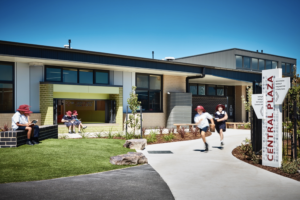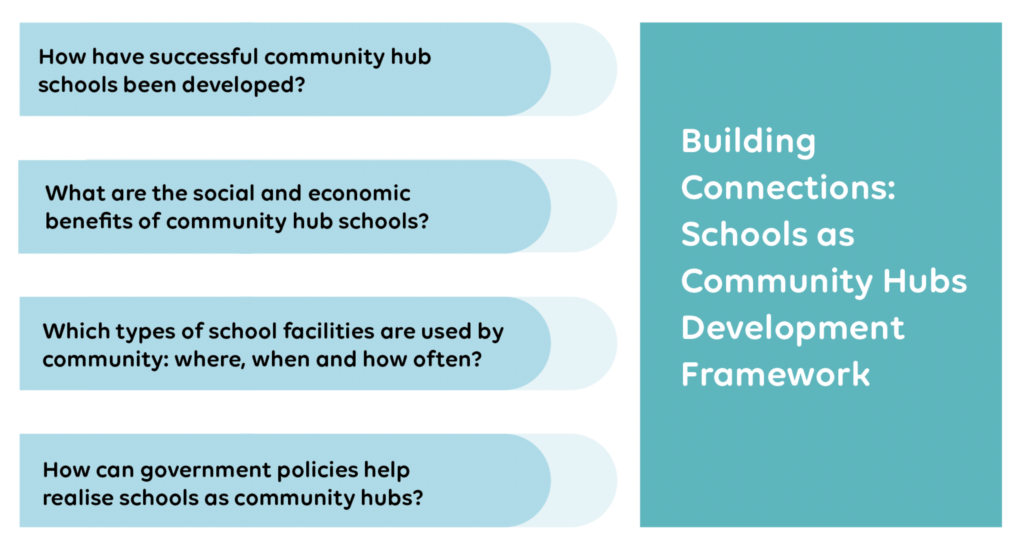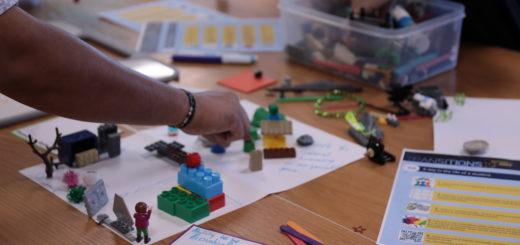New research: Building connections between schools and communities
Guest post on the Building Connections: Schools as Community Hubs Project (2019-2020) by Dr Sianan Healy
The ILE+TC Project’s Dr Ben Cleveland and Associate Professor Clare Newton are part of an exciting team of researchers recently awarded a three-year ARC Linkage Grant to undertake research into how school infrastructure can be better used to support communities. The Building Connections: Schools as Community Hubs project (2019–2022) is investigating how best to plan, design, govern and manage schools to operate successfully as ‘more than a school’, encouraging the development of resilient and connected communities. Working with industry and government partners and operating out of The University of Melbourne’s Learning Environments Applied Research Network (LEaRN), the Building Connections research team aim to answer the question:
How can research, policy and practice be coherently linked to inform the planning, design, governance and use of school infrastructure to meet the emerging needs of Australian communities?
Known variously as community schools, extended schools and full-service schools, the concept of the school as community hub has received scholarly attention for decades. However, sustained discourse has been interrupted over time and schools as community hubs have not been implemented widely around the globe. In the Australian context, government aspirations for closer school–communities ties are at an all-time high, yet the implementation and ongoing operation of schools as community hubs remains fraught with obstacles. The Building Connections project is important because it addresses the issues associated with the underutilisation of schools as community assets in Australia.

Photograph by Rhiannon Slater. The school is master-planned to integrate with the adjacent public reserve. It provides an integrated maternal child health centre and early learning facility for 109 pre-school children as part of a fully integrated educational model that supports learning from birth. Public, privileged and private spaces within the school precinct have been considered together with the location and potential for the community to utilise the school facilities after school hours.
While the co-location of school and social infrastructure is not as common as might be expected, these buildings and spaces, including what we call ILEs, are increasingly recognised for their potential to support the education, health and wellbeing of individuals, families and community groups – especially in rapidly growing areas of Australia’s largest cities and regional centres (figure 1). In the next decade, Australia will need up to 700 new schools to meet the demands of a growing population. This not only presents possibilities for the design and implementation of a range of learning environments, but also presents a significant opportunity to embed new knowledge about the role that indoor and outdoor spaces can play in developing and supporting communities across the country.
Key project aims include understanding how successful community hub schools have been developed, the social and economic benefits of community hub schools, and how government policy can help realise them (figure 2). This research will inform the Building Connections: Schools as Community Hubs Development Framework, which will provide policy guidance to help state governments, non-government school systems, local councils, schools and community organisations overcome the obstacles that commonly limit the use of school facilities for broader community benefit.

Key inputs for the Building Connections: Schools as Community Hubs Development Framework.
Find out more by coming to the Schools as Community Hubs Conference, 3–4 December 2020: The Schools as Community Hubs Conference, hosted by the Melbourne School of Design, is bringing together architects, educators, learning spaces specialists and university researchers to explore the expanded roles of schools, investigating how and in what ways schools may offer more to their communities – historically, currently, and into the future.
Registration will open shortly; subscribe to the Building Connections newsletter for updates.
Stay in touch: Subscribe to the Building Connections newsletter to stay informed on the project’s research and events.



